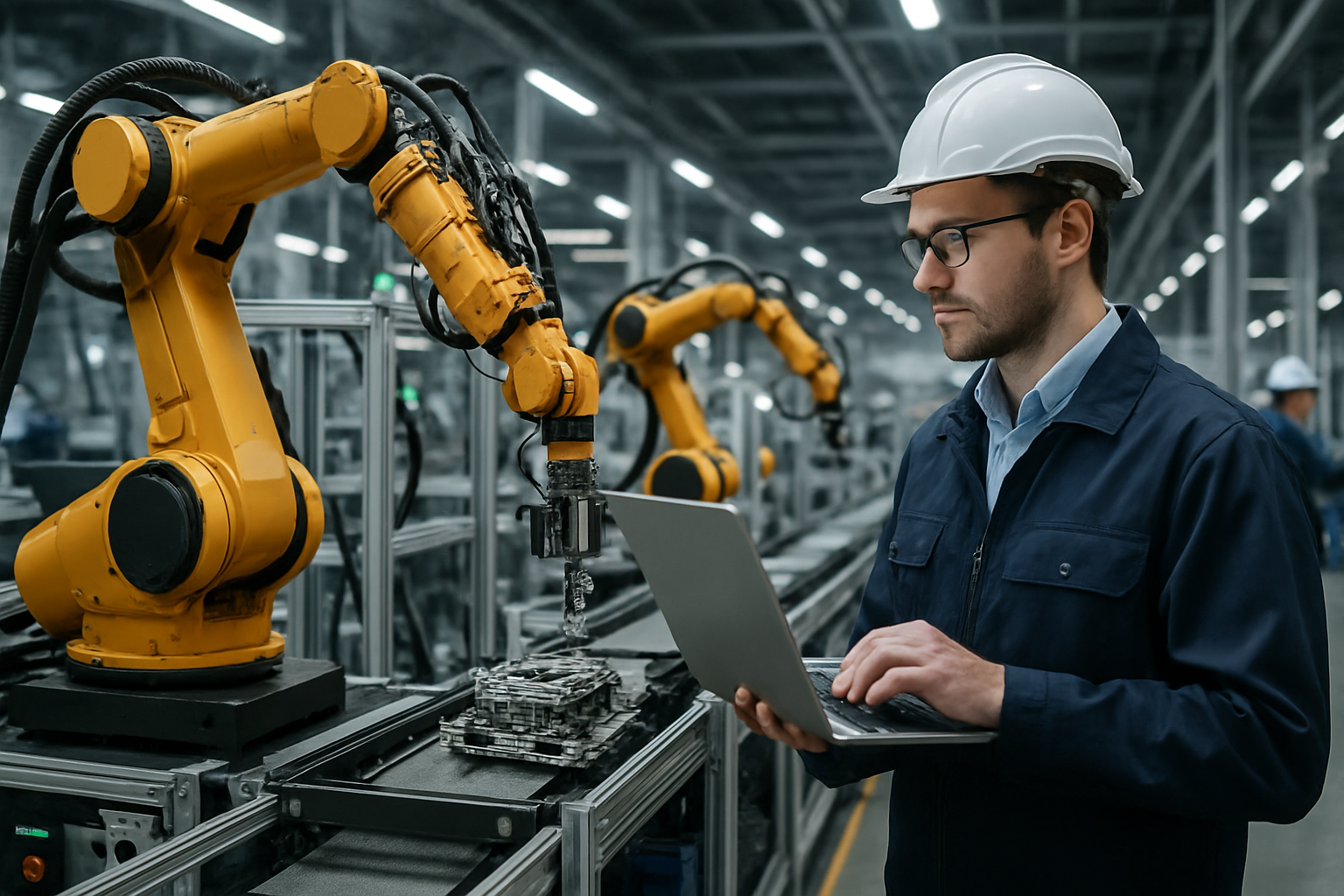Smart Manufacturing Synergies: Integrating Collaborative Robots
In the fast-paced world of industrial operations, the convergence of advanced technologies is reshaping production landscapes. One of the most promising developments in this arena is the integration of collaborative robots, or cobots, into smart manufacturing environments. This synergy is not just enhancing efficiency but also redefining human-machine interactions on factory floors worldwide.

The Evolution of Collaborative Robotics
Collaborative robots have come a long way since their inception in the mid-1990s. Initially designed to work alongside humans without the need for safety cages, early cobots were limited in their capabilities and applications. However, advancements in sensor technology, artificial intelligence, and machine learning have dramatically expanded their functionality and versatility.
Today’s cobots are equipped with sophisticated vision systems, force sensors, and intuitive programming interfaces. These features allow them to adapt to dynamic environments, recognize and manipulate various objects, and perform complex tasks with minimal human intervention. The result is a new breed of industrial robots that can seamlessly integrate into existing workflows, augmenting human capabilities rather than replacing them entirely.
Smart Manufacturing Ecosystem
The true power of collaborative robots emerges when they are integrated into a smart manufacturing ecosystem. This ecosystem typically includes interconnected machines, IoT sensors, data analytics platforms, and cloud computing infrastructure. Within this framework, cobots become nodes in a larger network, capable of receiving real-time instructions, sharing data, and making autonomous decisions based on production demands.
For instance, a cobot working on an assembly line can adjust its operations based on input from quality control sensors further down the line. If a defect is detected, the cobot can modify its assembly process in real-time, potentially preventing further issues and reducing waste. This level of adaptability and intelligence was previously unattainable with traditional automation systems.
Human-Robot Collaboration
One of the most significant advantages of integrating cobots into smart manufacturing is the enhancement of human-robot collaboration. Unlike traditional industrial robots that operate in isolation, cobots are designed to work alongside human operators, combining the strengths of both.
Human workers bring creativity, problem-solving skills, and adaptability to complex situations. Cobots, on the other hand, excel at repetitive tasks, precise movements, and handling heavy loads. By working together, humans and cobots can achieve levels of productivity and quality that surpass what either could accomplish alone.
This collaboration also leads to improved workplace safety. Cobots are equipped with advanced safety features that allow them to detect human presence and adjust their behavior accordingly. This means that workers can interact with cobots without the need for protective barriers, leading to more flexible and efficient use of factory floor space.
Data-Driven Optimization
The integration of cobots into smart manufacturing environments generates vast amounts of data. Every movement, every interaction, and every completed task can be logged and analyzed. This wealth of information provides unprecedented insights into production processes, enabling continuous optimization and improvement.
By leveraging machine learning algorithms, manufacturers can identify bottlenecks, predict maintenance needs, and optimize resource allocation. For example, data from cobots can be used to fine-tune their movements, reducing cycle times and energy consumption. Similarly, analysis of human-cobot interactions can lead to improved ergonomics and workflow designs, enhancing overall productivity and worker satisfaction.
Challenges and Considerations
While the integration of collaborative robots into smart manufacturing offers numerous benefits, it also presents several challenges. One of the primary concerns is the initial investment required for implementation. The cost of cobots, along with the necessary infrastructure upgrades and employee training, can be significant. However, many manufacturers find that the long-term benefits in terms of increased productivity and flexibility outweigh these upfront costs.
Another challenge lies in the realm of cybersecurity. As cobots become more connected and integrated into digital networks, they also become potential entry points for cyber attacks. Ensuring the security of these systems is crucial to prevent disruptions to production and protect sensitive manufacturing data.
Additionally, there are social and workforce implications to consider. While cobots are designed to augment human capabilities rather than replace workers, there may still be concerns about job displacement. Addressing these concerns through transparent communication and reskilling programs is essential for successful implementation.
Key Strategies for Successful Cobot Integration
-
Conduct a thorough assessment of current processes to identify areas where cobots can add the most value
-
Invest in comprehensive training programs for employees to ensure smooth human-robot collaboration
-
Implement robust cybersecurity measures to protect connected cobot systems
-
Develop a data management strategy to effectively utilize the insights generated by cobot integration
-
Foster a culture of continuous improvement, encouraging feedback and ideas from workers interacting with cobots
The integration of collaborative robots into smart manufacturing environments represents a significant step forward in industrial automation. By combining the strengths of humans and machines, manufacturers can achieve new levels of productivity, quality, and flexibility. As technology continues to advance, the synergy between cobots and smart manufacturing systems will likely deepen, leading to even more innovative and efficient production methods.
The key to success in this new era of manufacturing lies in embracing the potential of human-robot collaboration while addressing the challenges it presents. By doing so, companies can position themselves at the forefront of the next industrial revolution, ready to meet the demands of an increasingly complex and dynamic global market.




